Reels and Reverie
-
Ships in 1 to 2 weeks
Details
Description
SKU: CF.CAS96
Composed by Alan Lee Silva. Carl Fischer Concert String Orchestra Series. Set of Score and Parts. With Standard notation. 24+10+24+4+10+7+10+20 pages. Duration 4 minutes, 56 seconds. Carl Fischer Music #CAS96. Published by Carl Fischer Music (CF.CAS96).ISBN 9781491142165. UPC: 680160630226. Key: E minor.
Influenced by Irish music, Reels and Reverie strikes a dramatic tone from the start with its driving original jig melody. All of this is packaged in a way only an Alan Lee Silva composition can. There is an effortless flowing nature to the Irish-style melody that is contrasted by a lush lyrical theme. This is a challenging work, but worth the effort.
Written in – with an Irish influence, Reels and Reverie strikes a dramatic tone from the outset as the violins sneak in with lyrical E-minor triplet question/answer motifs over solid root pedal figures in the cellos. The introduction grows and builds, finally punctuated by flashy two-measure ensemble phrase in mm. 9–10 that recurs thematically at the end of sections throughout the piece.After the introduction, the AAB form (mm. 15–41) begins in eight-measure phrases with swirling triplet melodies over pulsing quarter notes and ensemble-hits in the low strings. The A-section is made up of a series of one-measure motifs, creating a subtle call-and-response effect. The violins help define the – time feel with accents on the first note of each triplet as they dig in with the main theme. Measures 23–30 feature melodic trade-offs between the sections, leading to commanding Emi11 ensemble-hits in mm. 31–38.The mood transitions in mm. 40–41, and the ensemble plays sensitively with legato phrasing, setting up the C-section (mm. 42–58). A chorale-like theme begins with espressivo violins and lush harmonies throughout this section. The orchestra plays more freely and more emotionally as the driving energy earlier in the piece gives way to a more passionate and tender approach. Slight variations in tempo are indicated, and several natural pauses are implied by the contours of the melodic line.In mm. 59–78 the excitement returns as the A- and B-sections are reprised, and the ensemble plays dynamically and vigorously as before. The tempo slows once more in mm. 79–95, changes meter to –, and transitions to a new ballad setting, featuring an elegant new theme. The ensemble plays beautifully as Violin 1 carries the main melody, answered by background lines and secondary motifs by Violin 2, Viola and Cello. The melody ascends in mm. 87–94 as the ensemble plays with more emotional fervor, and the piece begins to transition back to the original theme in –.The two-measure set up in mm. 94–95 starts the move from the – rhythmic feel back into the – feel. The intensity increases along with the tempo in m. 96, as the recapitulation of the main theme begins anew with energy and drive. The violins lead with the rolling melody, followed by counter-lines in Violin 2 and Viola. The low strings dig in with steady, pulsing quarter note roots and accented figures.In mm. 105–108, the low strings rumble on with gusto as they are featured playing a variation of the A-melody. Violin 1 takes the lead in mm. 109–117 with new material over a pedal point on the dominant in the low strings as the spirited run to the end begins. The climactic conclusion begins in m. 115 with the forte-piano in the mid and low strings under swirling triplet figures in the violins. A final authoritative tutti figure in m. 120 ends the piece with a powerful exclamation point.
About Carl Fischer Concert String Orchestra Series
This series of pieces (Grade 3 and higher) is designed for advancing ensembles. The pieces in this series are characterized by:
- Expanded use of rhythms, ranges and keys but technical demands are still carefully considered
- More comprehensive bowing techniques
- Viola T.C. included
- Careful selection of keys and degree of difficulty for advancing musicians
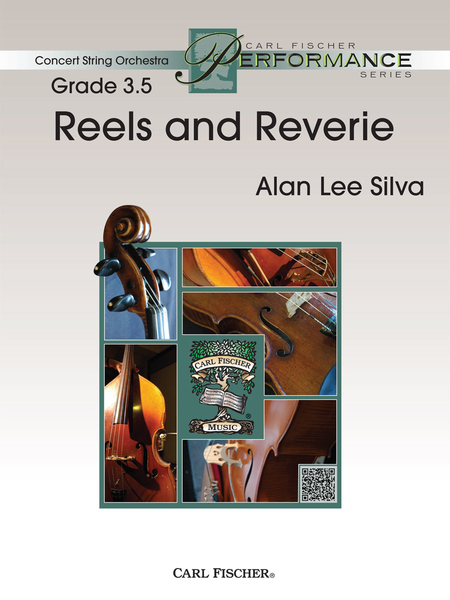
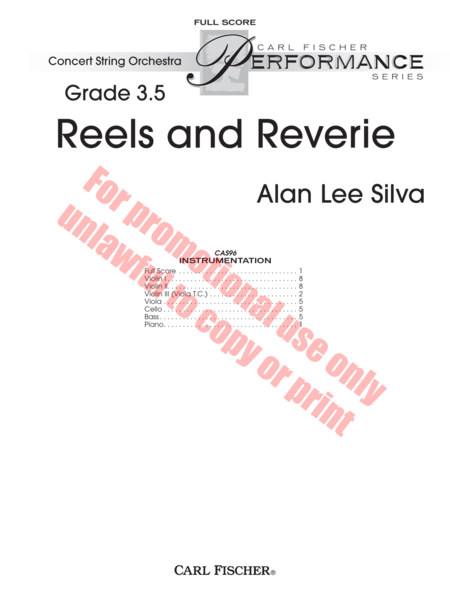
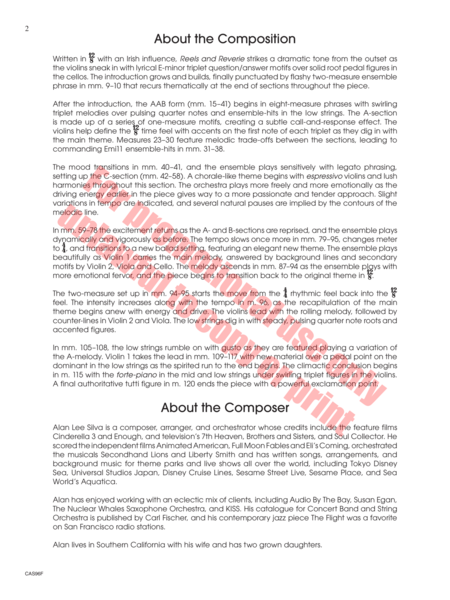
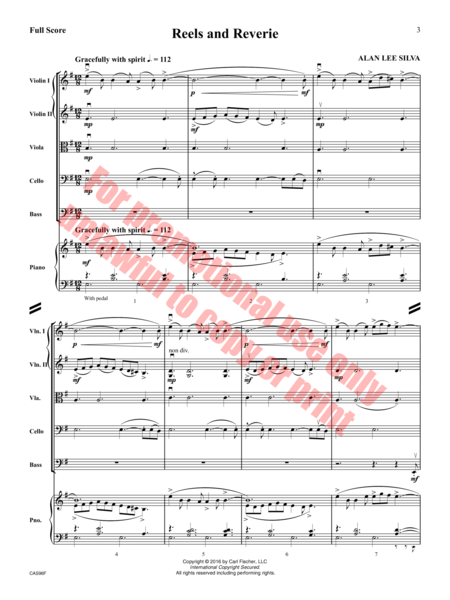
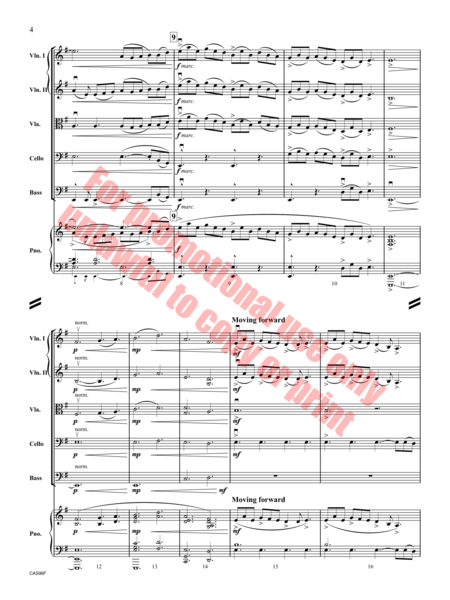
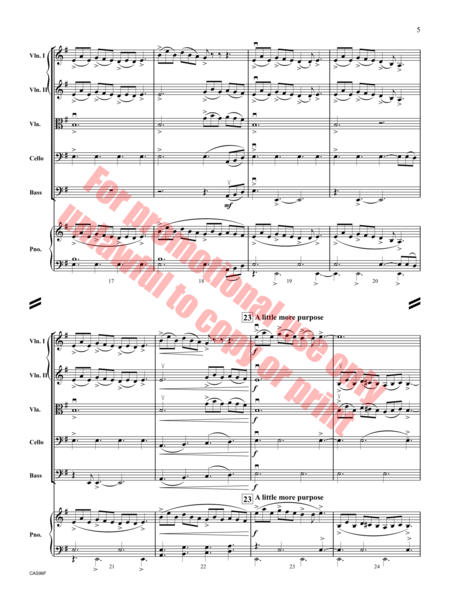
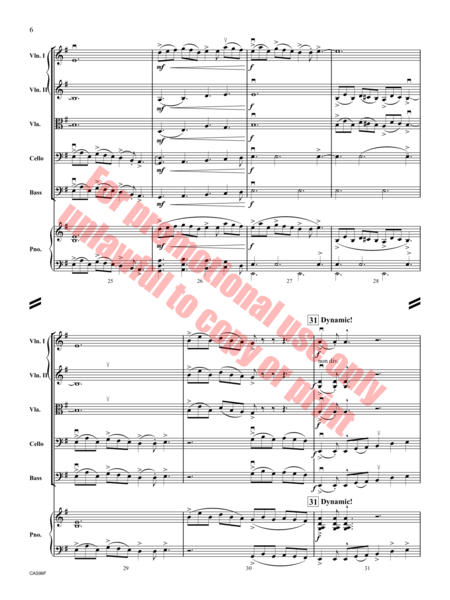
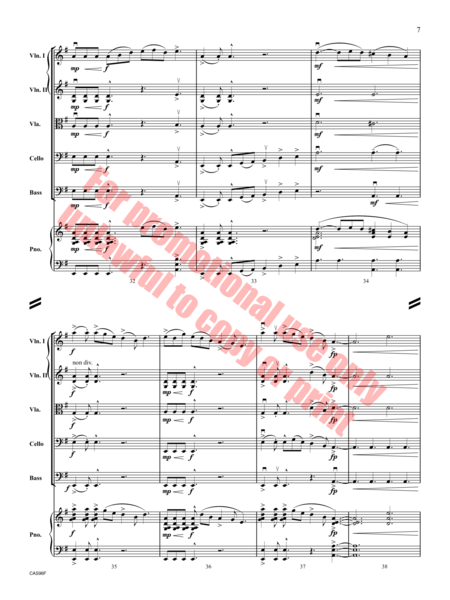
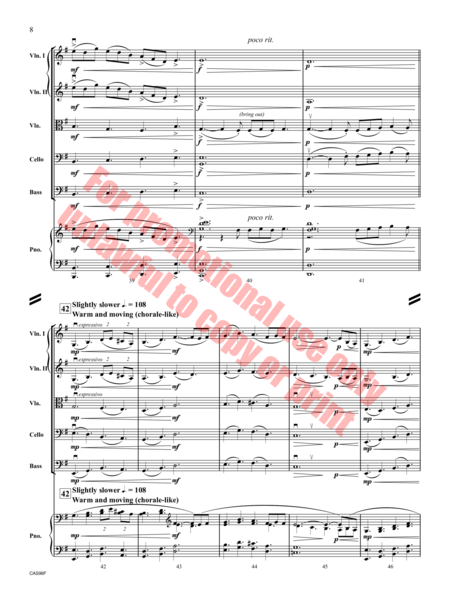
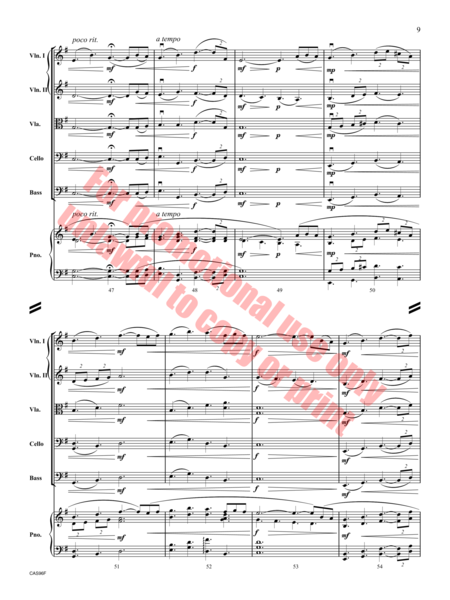
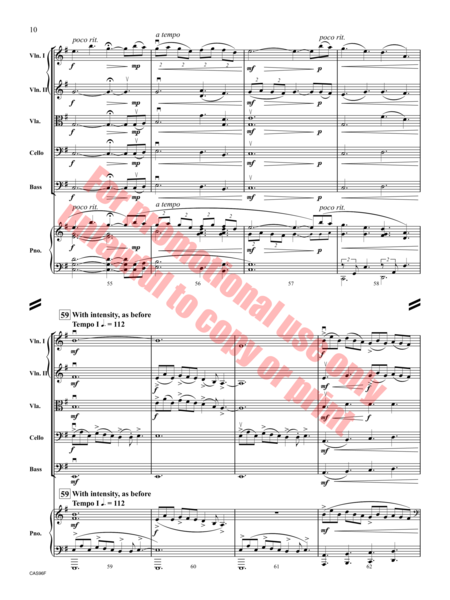

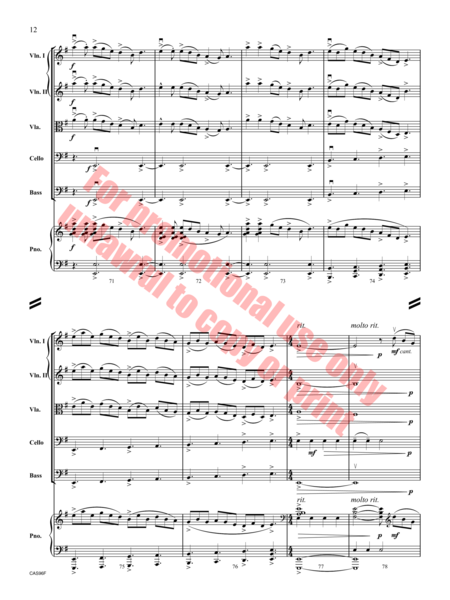
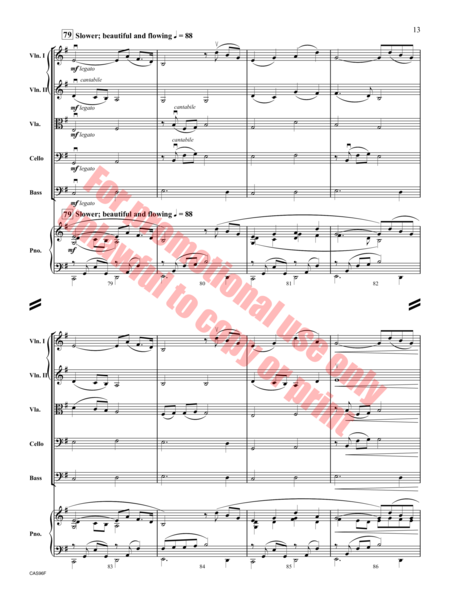
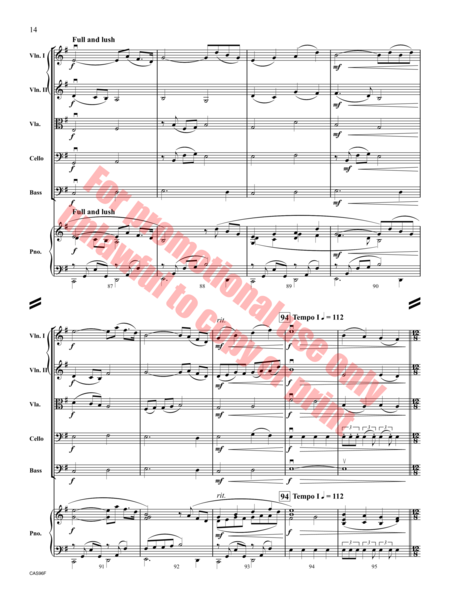
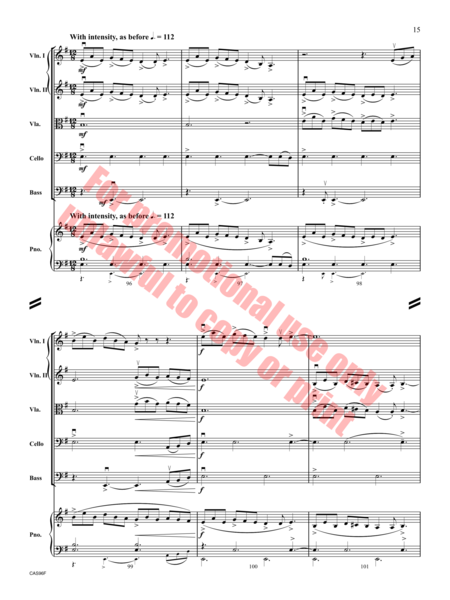
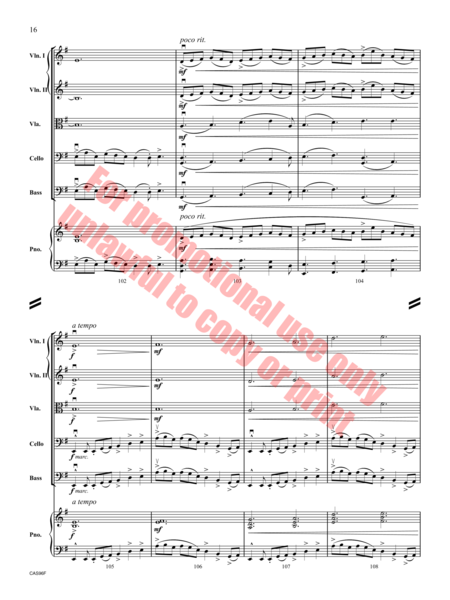
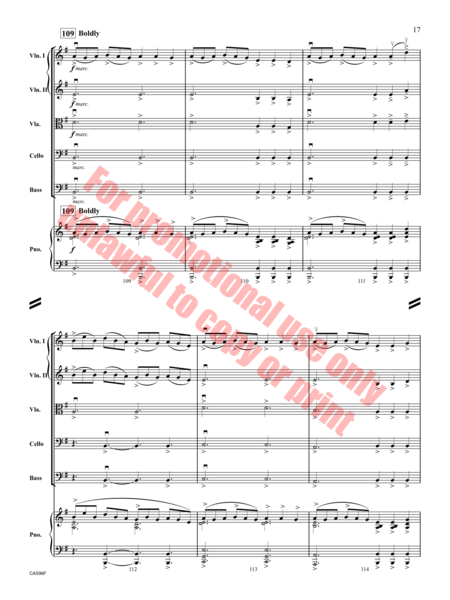
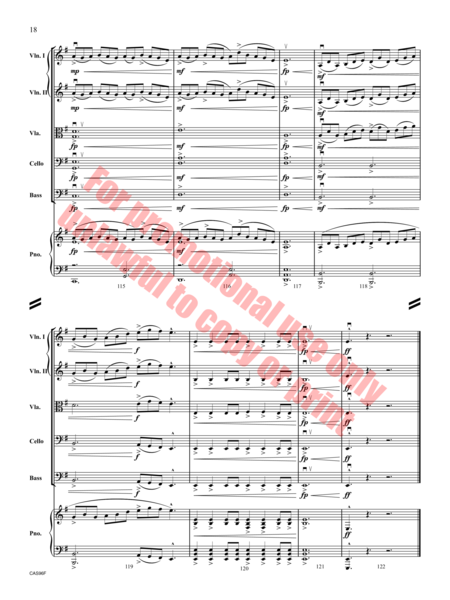
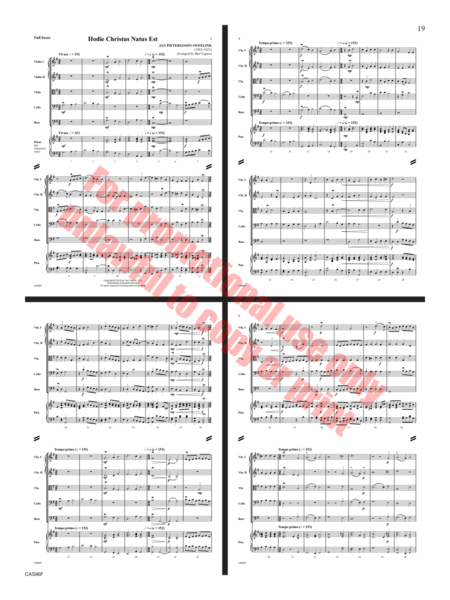
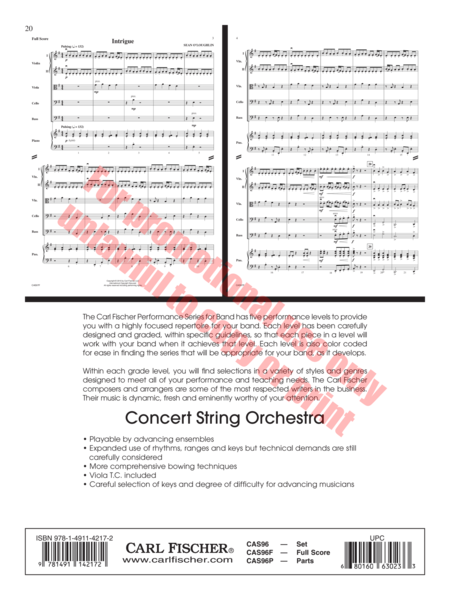
 Share
Share